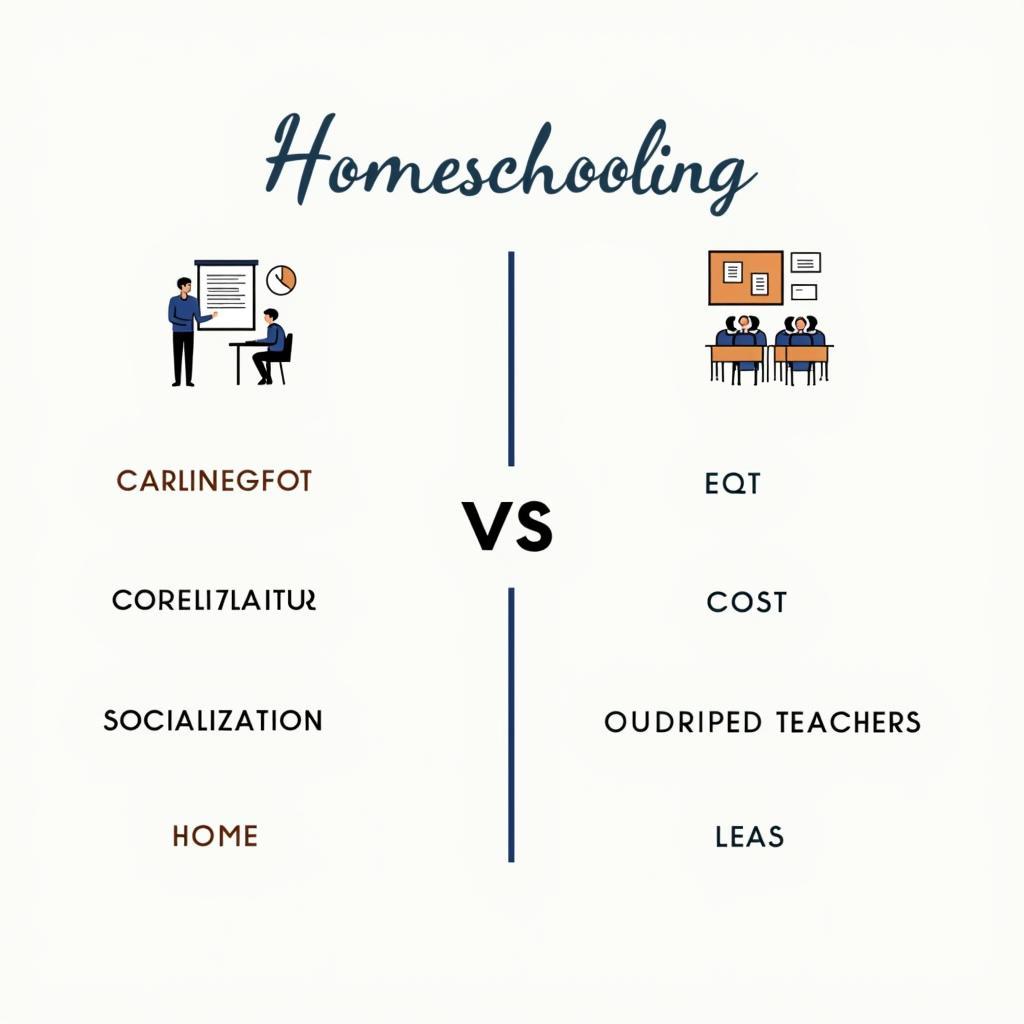Mở bài
Chủ đề hạnh phúc theo độ tuổi xuất hiện khá thường xuyên trong IELTS Writing Task 2, đặc biệt dưới dạng Discuss both views. Câu hỏi “Are teenagers happier than adults? Discuss both sides.” không chỉ kiểm tra khả năng phân tích đa chiều mà còn đòi hỏi bạn dùng ví dụ thuyết phục, thuật ngữ tâm lý xã hội, và tổ chức ý mạch lạc. Trong bài này, bạn sẽ nhận được: 3 bài mẫu (Band 5-6, 6.5-7, 8-9), phân tích chấm điểm chi tiết theo bốn tiêu chí, danh sách từ vựng chủ điểm, cấu trúc câu dễ ăn điểm và checklist tự đánh giá.
Nội dung bài viết
- Mở bài
- 1. Đề Writing Part 2
- 2. Bài mẫu Band 8-9
- Phân tích Band điểm
- Các yếu tố giúp bài này được chấm điểm cao
- 3. Bài mẫu Band 6.5-7
- Phân tích Band điểm
- So sánh với bài Band 8-9
- 4. Bài mẫu Band 5-6
- Phân tích Band điểm
- Những lỗi sai của bài – phân tích & giải thích
- Cách Cải Thiện Từ Band 6 Lên Band 7
- 5. Từ vựng quan trọng cần nhớ
- 6. Cấu trúc câu dễ ăn điểm cao
- 7. Checklist Tự Đánh Giá
- Kết bài
Một số đề thi thực tế đã được ghi nhận trên các nguồn uy tín như IELTS Liz (bộ sưu tập đề thật), IELTS-Blog (reported test questions) và British Council (dạng câu hỏi Discuss both views) có nội dung tương tự:
- “Some people think that teenagers are happier than adults. Discuss both views and give your opinion.” (tổng hợp trên IELTS Liz và IELTS-Blog)
- “Young people are believed to enjoy life more than adults. Discuss both sides and give your opinion.” (xuất hiện trong bộ đề luyện của British Council/IDP)
- “Teenagers experience more happiness than adults due to fewer responsibilities. Discuss both views and give your opinion.” (biến thể quen thuộc trong đề tổng hợp)
Bạn sẽ học được cách mở bài- thân bài- kết bài chuẩn Task 2, cách dùng dẫn chứng vừa đủ, dùng từ chính xác, và tránh lỗi mạo từ, thì, giới từ – những lỗi phổ biến với thí sinh Việt Nam. [internal_link: Cách viết Discuss both views]
1. Đề Writing Part 2
Are teenagers happier than adults? Discuss both sides and give your opinion.
Dịch đề: Bạn trẻ có hạnh phúc hơn người lớn không? Hãy bàn luận cả hai quan điểm và nêu ý kiến của bạn.
Phân tích đề bài:
- Dạng câu hỏi: Discuss both views + opinion. Bạn phải:
- Trình bày cả hai lập luận (teenagers happier vs adults happier).
- Đưa ra quan điểm cá nhân rõ ràng.
- Hỗ trợ bằng lý lẽ và ví dụ hợp lý.
- Thuật ngữ quan trọng:
- Teenagers/adolescents: thanh thiếu niên.
- Adults: người trưởng thành.
- Happiness/well-being/life satisfaction: hạnh phúc, phúc lợi tinh thần, mức độ hài lòng cuộc sống.
- Hedonic vs eudaimonic happiness: hạnh phúc khoái lạc tức thời vs hạnh phúc gắn mục đích, ý nghĩa.
- Lỗi thường gặp:
- Không cân bằng hai phía, viết lệch về một bên.
- Thiếu opinion hoặc opinion mơ hồ.
- Ví dụ chung chung, không liên quan.
- Lặp từ “happy”, thiếu từ vựng học thuật.
- Sai mạo từ (a/an/the), thì hiện tại đơn – hiện tại hoàn thành, giới từ (in/on/for).
- Cách tiếp cận chiến lược:
- Dàn ý 2 đoạn thân bài: Mỗi đoạn một quan điểm, cuối bài nêu rõ opinion hoặc lồng opinion vào kết đoạn.
- Dùng cặp khái niệm “hedonic vs eudaimonic” để tăng chiều sâu.
- Ví dụ gần gũi: áp lực thi cử, tài chính, trách nhiệm gia đình, định hình bản sắc, tự chủ.
 Hình minh họa chủ đề Are teenagers happier than adults Discuss both sides trong IELTS Writing Task 2
Hình minh họa chủ đề Are teenagers happier than adults Discuss both sides trong IELTS Writing Task 2
2. Bài mẫu Band 8-9
Bài viết Band 8-9 thường thể hiện quan điểm sắc bén, ví dụ thuyết phục, từ vựng đa dạng và chính xác, cấu trúc câu linh hoạt và liên kết mượt mà.
Bài luận (khoảng 300 từ):
While it is tempting to romanticize adolescence as a carefree period, the question of whether teenagers are happier than adults is more complex than nostalgia suggests. On the one hand, teenagers often enjoy time affluence, a rich web of friendships, and the thrill of first experiences. Such novelty can generate hedonic spikes in mood, and school-based routines shield many from full financial and caregiving burdens. Neurobiologically, adolescents may also be more responsive to rewards, which amplifies moments of joy.
On the other hand, teenage life is hardly untroubled. Many face relentless exams, social comparison on digital platforms, and identity formation pressures. These can produce volatility and insecurity. By contrast, adults typically gain greater autonomy and a consolidated sense of self. Even though they shoulder bills and responsibilities, they can derive eudaimonic fulfillment from purposeful work, stable relationships, and long-term projects. Adults can also calibrate expectations and build resilience over time, which buffers against stress.
Crucially, happiness is multidimensional. Teenagers may report more intense highs yet deeper lows, whereas adults achieve steadier, if quieter, well-being. Context matters: a supportive family, healthy school culture, or fair workplace can transform outcomes. Nevertheless, if happiness is measured not only by momentary pleasure but by meaning, agency, and life satisfaction, adults may have a slight edge. They have more control over their environment and can intentionally cultivate habits—exercise, community involvement, and gratitude—that sustain well-being.
In my view, teenagers are not intrinsically happier than adults; they simply experience happiness differently. What determines the balance is not age per se but whether one’s stage of life enables autonomy, supportive relationships, and manageable responsibilities. Adults, despite heavier loads, often orchestrate these conditions more effectively.
Phân tích Band điểm
| Tiêu chí | Band | Nhận xét |
|---|---|---|
| Task Response (Hoàn thành yêu cầu) | 8.5 | Trả lời đủ hai phía, có opinion rõ ràng và nhất quán. Lập luận phát triển sâu với tiêu chí hedonic/eudaimonic. Ví dụ mang tính khái quát học thuật, không lan man. |
| Coherence & Cohesion (Mạch lạc & Liên kết) | 8.0 | Bố cục hợp lý, mỗi đoạn phụ trách một góc nhìn. Dùng liên kết logic mượt (“On the one hand…By contrast…Crucially…Nevertheless”). Không lạm dụng từ nối. |
| Lexical Resource (Từ vựng) | 8.5 | Từ vựng đa dạng, chính xác: time affluence, identity formation, calibrate expectations, buffer, eudaimonic fulfillment. Collocations tự nhiên, ngữ cảnh chuẩn. |
| Grammatical Range & Accuracy (Ngữ pháp) | 8.0 | Câu phức, mệnh đề quan hệ, cụm phân từ dùng linh hoạt. Hầu như không có lỗi; dấu câu và song song ngữ pháp chuẩn. |
Các yếu tố giúp bài này được chấm điểm cao
- Khung phân tích hedonic vs eudaimonic tạo chiều sâu học thuật.
- Opinion rõ ràng, không nước đôi, xuất hiện ở mở và kết thúc.
- Ví dụ mang tính phổ quát (thi cử, social media, tài chính) phù hợp bối cảnh quốc tế lẫn Việt Nam.
- Collocations học thuật chính xác: derive fulfillment from, build resilience, buffer against stress.
- Cấu trúc câu đa dạng: mệnh đề quan hệ, đảo ngữ nhẹ, cụm phân từ.
- Liên kết ý mạch lạc, không nhồi nhét từ nối.
- Mật độ ý vừa đủ, không sa đà số liệu hay dẫn chứng bịa.
3. Bài mẫu Band 6.5-7
Bài viết Band 6.5-7 có quan điểm rõ, phát triển ý tương đối tốt, nhưng từ vựng và ngữ pháp chưa thật tinh tế; đôi chỗ lặp từ hoặc ví dụ còn chung.
Bài luận (260-280 từ):
People often claim that teenagers are happier than adults because they have fewer responsibilities. This view is understandable since many adolescents enjoy school life, spend time with friends, and feel excited about new experiences. These factors can make daily life more enjoyable, and teenagers may feel less pressure from money or long working hours.
However, this is only part of the picture. Teenagers also deal with heavy exams, parental expectations, and peer pressure. With social media, they are constantly comparing themselves with others, which can create stress or anxiety. Adults, although they carry financial and family duties, usually gain more control over their decisions. They can choose their jobs and relationships more freely, and many people find meaning in building a career or raising children.
In addition, adults tend to manage emotions better than teenagers. They learn from failures and become more resilient. Even if adults are busy, they can plan their schedules to include exercise or hobbies, which improves their well-being. Teenagers may not always have this freedom, because their time is shaped by school and parents.
In my opinion, teenagers are not always happier than adults. They might experience strong happiness in some moments, but adults often reach a more stable kind of happiness based on purpose and independence. Therefore, whether someone is happier depends less on age and more on support from family, mental health awareness, and the ability to balance work or study with personal life.
Overall, both groups can be happy, but in different ways.
Phân tích Band điểm
| Tiêu chí | Band | Nhận xét |
|---|---|---|
| Task Response (Hoàn thành yêu cầu) | 7.0 | Bàn luận đủ hai phía, có opinion rõ. Một vài chỗ thiếu ví dụ cụ thể hơn nhưng vẫn hợp lý. |
| Coherence & Cohesion (Mạch lạc & Liên kết) | 7.0 | Cấu trúc đoạn hợp lý; dùng từ nối cơ bản. Một số ý có thể gộp/triển khai sâu hơn để tránh lặp. |
| Lexical Resource (Từ vựng) | 6.5 | Từ vựng phù hợp nhưng chưa phong phú; lặp lại “happiness/pressure”. Ít collocations học thuật. |
| Grammatical Range & Accuracy (Ngữ pháp) | 6.5 | Câu phức có nhưng chưa đa dạng. Lỗi nhỏ về mạo từ/giới từ có thể xảy ra, song nhìn chung chính xác. |
So sánh với bài Band 8-9
- Chiều sâu lập luận: B8-9 dùng khung “hedonic/eudaimonic”, B6.5-7 chỉ mô tả chung.
- Từ vựng: B8-9 phong phú, collocations tự nhiên; B6.5-7 lặp từ và ít thuật ngữ.
- Ngữ pháp: B8-9 đa dạng cấu trúc (mệnh đề quan hệ, cụm phân từ, đảo ngữ), B6.5-7 ít linh hoạt hơn.
- Ví dụ: B8-9 cụ thể và gắn khái niệm; B6.5-7 thiên mô tả, thiếu chiều sâu phân tích.
4. Bài mẫu Band 5-6
Bài Band 5-6 thường có ý rõ nhưng thiếu phát triển, liên kết rời rạc, nhiều lỗi mạo từ, thì, giới từ; từ vựng đơn giản, lặp lại.
Bài luận (250-270 từ):
Many people say teenagers are happier than adults because they have less things to worry. Teenagers go to school and they have friends to play after class, so they feel happy. They also do not pay many bills, so life is easier for them. In the other hand, adults have to work a lot and take care for family, so they are more stressful and not happy.
However, this idea is not always correct. Teenagers also face exams and parents pressure. They are easily to compare with others on social media, which make them feel bad. Adults, although they are busy, they can choose their job and they can make important decisions by themself, which can bring meaning for life. Some adults also find happiness when they raise childrens or when they success in career.
Moreover, adults can manage time better. They plan to do exercise or meet friends on weekend. Teenagers sometimes cannot, because they depend on school schedule and parents. So, happiness is not only about age but also about how people control their life and how much support they have from family and society.
In conclusion, I think teenagers are not always happier than adults. It is different in each person. If you have support and balance, you can be happy at any age. But many people still believe teenagers are happier because they remember their young time and forget the problems.
Lỗi đã được làm nổi bật: “in the other hand”, “less things”, “parents pressure”, “they are more stressful”, “by themself”, “childrens”.
Phân tích Band điểm
| Tiêu chí | Band | Nhận xét |
|---|---|---|
| Task Response (Hoàn thành yêu cầu) | 5.5 | Có thảo luận hai phía và opinion nhưng phát triển ý còn nông, ví dụ chung chung. |
| Coherence & Cohesion (Mạch lạc & Liên kết) | 5.5 | Dùng liên từ hạn chế, một số câu nối khiên cưỡng. Lặp ý giữa các đoạn. |
| Lexical Resource (Từ vựng) | 5.5 | Từ vựng cơ bản, lặp từ “happy/stress”. Dùng sai collocation và hình thức từ. |
| Grammatical Range & Accuracy (Ngữ pháp) | 5.0 | Nhiều lỗi mạo từ, danh từ số nhiều, giới từ, cụm động từ. Câu phức chưa chuẩn. |
Những lỗi sai của bài – phân tích & giải thích
| Lỗi sai | Loại lỗi | Sửa lại | Giải thích |
|---|---|---|---|
| in the other hand | Collocation/linker | on the other hand | Cụm cố định: on the other hand. |
| less things | Số nhiều/định lượng | fewer things | Things là đếm được → fewer. |
| parents pressure | Sở hữu cách | parents’ pressure / parental pressure | Cần sở hữu cách hoặc tính từ. |
| they are more stressful | Từ loại | they are more stressed | Stressed (tính từ cảm xúc), stressful (gây căng thẳng). |
| take care for family | Giới từ | take care of the family | Collocation: take care of. |
| by themself | Đại từ phản thân | by themselves | Phù hợp số nhiều với “they”. |
| childrens | Danh từ số nhiều | children | Children đã là số nhiều. |
| which make them feel bad | Hòa hợp S-V | which makes them feel bad | Mệnh đề quan hệ giống số ít với which + V(s). |
Cách Cải Thiện Từ Band 6 Lên Band 7
- Mở rộng từ vựng theo cụm: “financial responsibilities”, “build emotional resilience”, “derive meaning from work”.
- Tăng chiều sâu lý luận: đưa khung “hedonic vs eudaimonic”, “time affluence vs financial security”.
- Sửa lỗi hệ thống: mạo từ (a/an/the), số nhiều, collocation (take care of, responsible for).
- Đa dạng cấu trúc: mệnh đề quan hệ, cụm phân từ, câu điều kiện nâng cao.
- Ví dụ cụ thể gắn bối cảnh VN: áp lực thi đại học, xu hướng so sánh trên mạng, trách nhiệm phụng dưỡng cha mẹ.
5. Từ vựng quan trọng cần nhớ
| Từ/Cụm từ | Loại từ | Phiên âm | Nghĩa tiếng Việt | Ví dụ (English) | Collocations |
|---|---|---|---|---|---|
| adolescent | n./adj. | /ˌædəˈlɛsnt/ | thanh thiếu niên | Adolescents often value peer approval. | adolescent development |
| adult | n./adj. | /ˈædʌlt/ | người lớn; trưởng thành | Adults shoulder financial responsibilities. | adult responsibilities |
| well-being | n. | /ˌwɛlˈbiːɪŋ/ | phúc lợi tinh thần | Exercise improves mental well-being. | physical/mental well-being |
| life satisfaction | n. | /laɪf ˌsætɪsˈfækʃn/ | mức độ hài lòng cuộc sống | Adults may report higher life satisfaction. | report/achieve life satisfaction |
| hedonic | adj. | /hɪˈdɒnɪk/ | khoái lạc | Hedonic pleasure peaks during novelty. | hedonic pleasure |
| eudaimonic | adj. | /juːdaɪˈmɒnɪk/ | hạnh phúc gắn ý nghĩa | Eudaimonic happiness comes from purpose. | eudaimonic well-being |
| peer pressure | n. | /pɪə ˈprɛʃə/ | áp lực bạn bè | Peer pressure can distort choices. | face/succumb to peer pressure |
| autonomy | n. | /ɔːˈtɒnəmi/ | tự chủ | Autonomy contributes to fulfillment. | gain/exercise autonomy |
| resilience | n. | /rɪˈzɪliəns/ | khả năng phục hồi | Resilience buffers against stress. | build/develop resilience |
| social comparison | n. | /ˈsəʊʃl kəmˈpærɪsn/ | so sánh xã hội | Social comparison undermines confidence. | engage in social comparison |
| time affluence | n. | /taɪm ˈæfluəns/ | dư dả thời gian | Time affluence enhances well-being. | enjoy/lack time affluence |
| work-life balance | n. | /wɜːk laɪf ˈbæl.əns/ | cân bằng công việc-cuộc sống | Work-life balance prevents burnout. | achieve/maintain work-life balance |
| shoulder burdens | v. phr. | /ˈʃəʊldə ˈbɜːdnz/ | gánh vác gánh nặng | Adults shoulder caregiving burdens. | shoulder financial burdens |
| derive fulfillment from | v. phr. | /dɪˈraɪv fʊlˈfɪlmənt frɒm/ | tìm thấy sự thỏa mãn từ | Many derive fulfillment from parenting. | derive fulfillment from work |
| cultivate gratitude | v. phr. | /ˈkʌltɪveɪt ˈɡrætɪtjuːd/ | nuôi dưỡng lòng biết ơn | Cultivating gratitude improves mood. | cultivate gratitude daily |
Lưu ý phát âm: luyện theo IPA, chú ý trọng âm để tránh nói sai khi dùng trong Speaking.
6. Cấu trúc câu dễ ăn điểm cao
- Câu phức với mệnh đề phụ thuộc
- Công thức: Mệnh đề chính + liên từ phụ thuộc (because/although/while) + mệnh đề phụ.
- Ví dụ từ bài Band 8-9: “While it is tempting to romanticize adolescence, the question is more complex.”
- Vì sao ghi điểm: Thể hiện khả năng đối lập/nhượng bộ tinh tế.
- Ví dụ bổ sung:
- Although adults face bills, they often report higher life satisfaction.
- Because teenagers seek approval, they may be prone to social comparison.
- Lỗi thường gặp: Nhầm thì; thiếu dấu phẩy sau mệnh đề phụ đứng đầu.
- Mệnh đề quan hệ không xác định (non-defining relative clause)
- Công thức: Danh từ + mệnh đề quan hệ (which/who), ngăn bằng dấu phẩy.
- Ví dụ: “Adults gain autonomy, which buffers against stress.”
- Ghi điểm: Bổ sung thông tin, tăng tính mạch lạc.
- Bổ sung:
- Teenagers face exams, which can trigger anxiety.
- Social media, which encourages comparison, affects mood.
- Lỗi: Quên dấu phẩy; dùng “that” cho mệnh đề không xác định.
- Cụm phân từ (participle phrases)
- Công thức: V-ing/V-ed phrase, + mệnh đề chính.
- Ví dụ: “Neurobiologically speaking, adolescents may be more responsive to rewards.”
- Ghi điểm: Cô đọng, tự nhiên, học thuật.
- Bổ sung:
- Facing heavy exams, many teenagers experience stress.
- Shaped by routine, their weekdays feel predictable.
- Lỗi: Treo chủ ngữ (dangling modifier).
- Câu chẻ (cleft sentences)
- Công thức: It is/was + X + that/who + mệnh đề.
- Ví dụ: “It is adults’ autonomy that often fosters eudaimonic happiness.”
- Ghi điểm: Nhấn mạnh điểm trọng tâm.
- Bổ sung:
- It is social support that determines stability.
- It is not age but control that matters.
- Lỗi: Dùng dư thừa, lạm dụng làm câu nặng nề.
- Câu điều kiện nâng cao (mixed/third)
- Công thức: If + past perfect, would + V (nhấn mạnh giả định quá khứ–hiện tại).
- Ví dụ: “If teenagers had had more autonomy, they would feel steadier happiness now.”
- Ghi điểm: Linh hoạt thời, thể hiện suy luận.
- Bổ sung:
- If adults reduced overwork, they would sustain well-being.
- If schools emphasized balance, students would be less anxious.
- Lỗi: Sai thì, nhầm would/will.
- Đảo ngữ (inversion)
- Công thức: Only when/Not until/Never + trợ động từ + S + V.
- Ví dụ: “Only when autonomy is present do many adults find lasting contentment.”
- Ghi điểm: Tăng tính nhấn mạnh, đa dạng cấu trúc.
- Bổ sung:
- Never have teenagers faced such online pressure.
- Not until adulthood do some people appreciate stability.
- Lỗi: Quên đảo trợ động từ; dùng sai thì.
 Cấu trúc câu ăn điểm cao cho bài Discuss both views trong IELTS Writing Task 2
Cấu trúc câu ăn điểm cao cho bài Discuss both views trong IELTS Writing Task 2
7. Checklist Tự Đánh Giá
- Trước khi viết:
- Xác định dạng bài: Discuss both views + Opinion.
- Gạch nhanh 3-4 ý cho mỗi phía; chọn quan điểm rõ.
- Quyết định ví dụ: thi cử, tài chính, mạng xã hội, tự chủ.
- Trong khi viết:
- Mỗi thân bài một quan điểm; câu chủ đề rõ.
- Dùng 1-2 cấu trúc nâng cao/đoạn, không lạm dụng.
- Kiểm soát độ dài 260-320 từ.
- Sau khi viết:
- Soát mạo từ, số nhiều, giới từ, thì.
- Tìm từ lặp để thay bằng collocations.
- Kiểm tra coherence: ý có tiến triển logic?
- Mẹo quản lý thời gian:
- 5 phút lập dàn ý – 25 phút viết – 5 phút soát lỗi.
- Ghi sẵn 2-3 collocations chủ đề để lồng vào.
- Nếu bí ví dụ, dùng khung “hedonic vs eudaimonic”, “autonomy vs responsibility”.
Kết bài
Chủ đề Are Teenagers Happier Than Adults Discuss Both Sides. vừa quen thuộc vừa giàu “đất diễn” cho tư duy phản biện. Bạn đã có trong tay bộ công cụ hoàn chỉnh: 3 bài mẫu theo dải band 5-9, phân tích chấm điểm, bảng từ vựng chủ đề, 6 cấu trúc ăn điểm và checklist làm bài. Con đường cải thiện rõ ràng: nâng vốn collocations học thuật, luyện khung lập luận (hedonic/eudaimonic, autonomy/responsibility), đa dạng hóa cấu trúc và kiểm soát lỗi ngữ pháp hệ thống.
Hãy viết lại đề hôm nay bằng dàn ý riêng, đăng vào nhóm học cùng để nhận phản hồi, và lặp lại quy trình mỗi 2-3 ngày. Với luyện tập đều đặn 3-4 tuần, đa số học viên có thể tăng 0.5 band kỹ năng viết. Tham khảo thêm: [internal_link: Cách viết mở bài Task 2], [internal_link: Linking words Task 2], [internal_link: Lập dàn ý nhanh cho Discuss both views]. Viết ngay, chia sẻ bản thảo và cùng mình tối ưu bài cho mục tiêu band cao hơn.


